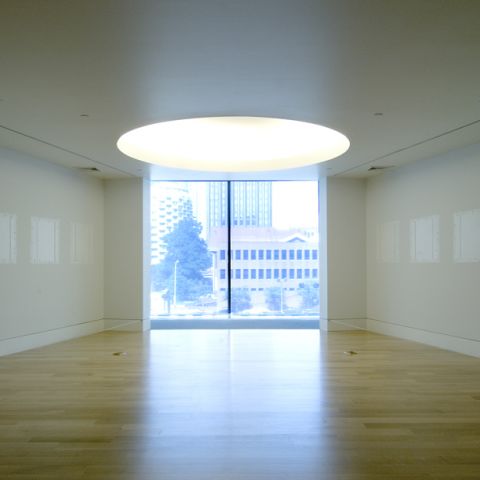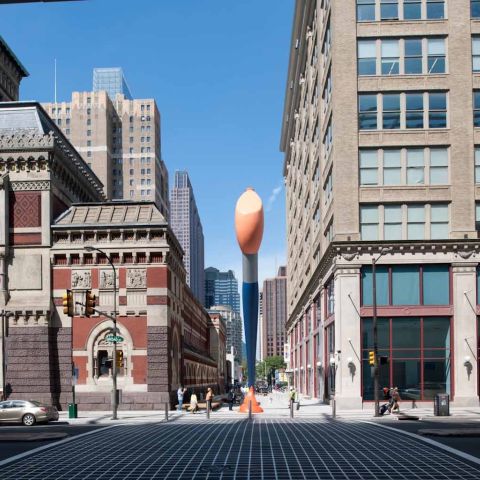Public Treasures/Private Visions
When the Pennsylvania Academy of the Fine Arts (PAFA) agreed to lend a group of paintings to the Metropolitan Museum of Art (the Met), the Met reciprocated with paintings from the Hudson River School.
Public Treasures/Private Visions was a rare opportunity to see paintings that seldom travel outside of New York City, as well as paintings from superlative select private collections of Hudson River School art.
The Hudson River School is one of the most influential traditions in the history of American landscape painting. Ranging from grand visions of the American West to quiet forest interiors, American painters absorbed the traditions of European landscape artists and reinvented them to celebrate the distinctiveness of the vast American landscape, creating new art for a new land. The often-dramatic vistas on large-scale canvasses became the signature vision that many Americans had of places like Yosemite, the Adirondacks, and the American West. As such, the images promoted curiosity and even impacted the westward expansion of the railroads and tourism.
Some of the paintings included in the exhibition were: Thomas Cole's View from Mount Holyoke, Northampton, Massachusetts, after a Thunderstorm-The Oxbow (1836); Asher Brown Durand's, The Beeches (1845); and a South American scene of Cotopaxi by Frederic Edwin Church.
Examples from PAFA's own collection were interspersed throughout the exhibition.
Listen to the interview with curator Anna Marley on the Hudson River School:
Peter Crimmins 0:00
It's called the Hudson River School which is not a school at all, but a style of landscape painting popularized in the 1800s. They presented a grandiose vision of America so awe-inspiring that legislators in Washington DC use the images while pushing for a National Park Service. Pennsylvania Academy of Fine Arts curator Anna Marley says the cliffs of Yosemite or the rocks of Yellowstone caressed in pink clouds or raging with thunderstorms were designed to grab viewers by the lapels.
Anna Marley 0:26
The treatment of light, the dramatic lighting effects is often sort of seen as a reflection of God in the American wilderness, which tied in a lot with transcendentalism and the time period.
Peter Crimmins 0:36
Some of these artists were trying to use paint to reconcile religion and science. So each leaf is individually rendered as though it came from Darwin's own notebook and a rock testifies to the glacier that formed it. The word Marley uses to describe this kind of precision is "insane"—and it went over big.
Anna Marley 0:53
Going to see these paintings was almost like going to the movies. You would pay your five cents, and you would go to an artist studio, and he would pull back the curtains, and you would sit there and view them. And of course, now we have the cinema to do that.
Peter Crimmins 1:09
Movies and photography have stolen some of the thunder of realistic art over the last hundred years, but it hasn't entirely removed the urge to see the world rendered in paint. An artist in Kennett Square named Robert Jackson recently put together a traveling show of contemporary realists, but he had a hard time getting museums interested. He claims there's a perception among curators that realism is too literal for modern audiences.
Robert Jackson 1:31
Sometimes you know the common man can't tell when you see a bad abstract painting (laughs) but they can you look at bad realism and go, "Yeah, that that's bad".
Peter Crimmins 1:41
Jackson's exhibit did make it into five museums never Philadelphia. But this town does have a strong tradition of realism stronger than most says art journalist Tyler Green. He says important collections of figurative work at places like the Academy and the Institute of Contemporary Art wield influence.
Tyler Green 1:57
There is no question that what museums show has an impact on the artists in their region. The Philadelphia Museum is strong in Eakins, the Wyeths are hard to miss. And that all gets into the water and influences the way artists and think.
(Background audio: "That's the color you have there now?")
Peter Crimmins 2:14
One of the places where that influence is exercised is Studio Incamminati, an art school at 12th and Callowhill. the teaches a highly disciplined realistic method of portraiture. After seven years the school now has its first gallery show in Bucks County. Its founder Nelson Shanks has a bone to pick with modern art. He says abstract painting actively disassembled techniques that have been honed since ancient Rome.
Nelson Shanks 2:17
To dismiss what the most gifted artists of the last thousands of years would be simply a refutation of anything artistic. We can put a 21st century feel into many of the techniques that have been used, and that is very exciting.
Peter Crimmins 2:57
Shanks says his main task is to teach history to see and like those 19th-century landscape artists with their Transcendentalism. They filter their perception through their own 21st-century experience. I'm Peter Crimmins, WHYY News.
We're so excited you're planning to visit PAFA!
Make time for art — visit us Thursday to Sunday.
Before reserving your tickets, please review helpful information about museum hours, accessibility, building access, and special admission programs.
If you have any questions, feel free to reach out to us at visitorservices@pafa.org — we’d love to help!


